This is a GOKO Macromax FR-3500 a 35mm point and shoot camera made by Goko Camera Co., Ltd. starting in 1998. The Macromax was part of a long line of simple point and shoot cameras with an unusually close macro focus capability. The Macromax, like it’s predecessors did not support electronic auto focus, but instead used selectable zone focus modes which using depth of field could obtain focus as close as 0.1 meters (~4 inches) away. The camera was normally sold with a close focus frame that mounted to the bottom of the camera, allowing the photographer to easily measure and frame an image at close range. Although an entirely plastic camera with little in the way of modern features, it was a capable and inexpensive entry point into the world of macro photography.
 Film Type: 135 (35mm)
Film Type: 135 (35mm)
Lens: 31mm f/6.7 GOKO coated 3-elements in 3-groups
Focus: Three Zone Manual Focus, Infinity to 1 meter (3.3 feet), 1 meter to 0.3 meters (3.3 feet to 12 inches), 0.3 meters to 0.1 meters (12 inches to 4 inches)
Viewfinder: Scale Focus Zone Focus Frame Lines and Center Focus Spots
Shutter: Metal Blade
Speeds: 1/90 – 1/300 seconds
Exposure Meter: Coupled CdS Cell w/ Programmed Auto Exposure
Battery: 3v CR2 Lithium Battery
Flash Mount: In-Body Electronic Flash, 1/10,000 second Flash Burst
Weight: 186 grams
Manual: None
How these ratings work |
The GOKO Macromax is a purpose built point and shoot camera that was designed to make macro photography as easy as possible. It’s simple, all plastic body, and three zone manual focus system, along with auto exposure system and in body flash, make shooting images as close as 4 inches a snap. This isn’t a macro lens equipped SLR, but it doesn’t attempt to be one, nor does it cost as much as one either. The GOKO Macromax does a really good job at being simple, and delivers images of surprisingly quality. If you want higher quality macro photography, you’ll need to spend a lot more, but for the beginner who just wants to shoot closeups of bugs and flowers around their house, the GOKO Macromax is a winner! | ||||||
| Images | Handling | Features | Viewfinder | Feel & Beauty | History | Age | |
| 1 | 2 | 1 | 1 | 1 | 2 | 0% | |
| Bonus | +1 for perfect execution of an advanced concept in a simple and easy to use camera | ||||||
| Final Score | 9.0 | ||||||
History
For many people, myself included, the name GOKO isn’t a name you associate as a maker of cameras. In fact, prior to my awareness of the Macromax series, I had never heard of the company, yet for a brief moment in the 1980s and 1990s, GOKO was the leading manufacturer of special purpose close focus cameras.
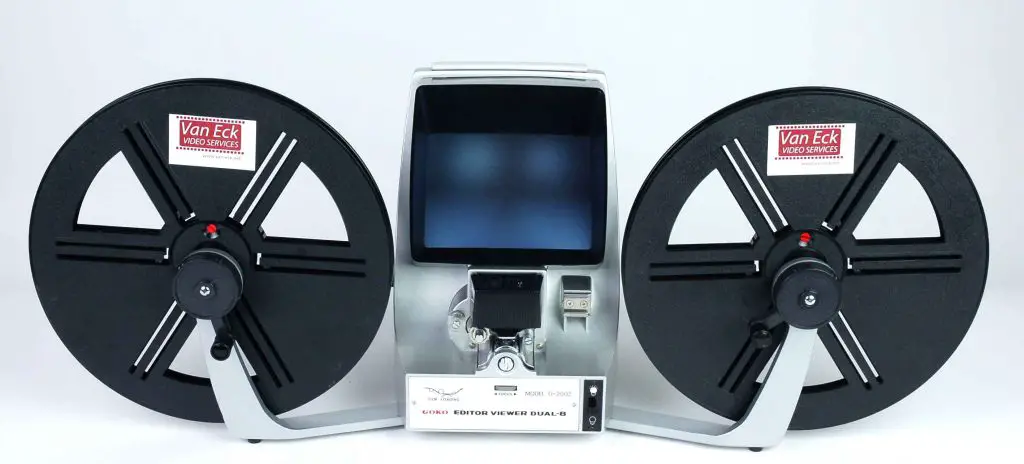
GOKO was founded in 1953 by Gotō Tadashi as Sansei Kōki Co., Ltd and made various optical parts for a variety of industries including photography, medical, and scientific applications. In the 60s, Sansei started production on the GOKO G-2002, the world’s first 8mm film editor that supported both Single and Double-8 formats, but also the newer Super-8 format.
The GOKO G-2020 was very successful, and according to GOKO’s own website, at one time had 85% of the world’s market share of 8mm editors. The success of the G-2020 led to production of a large number of other film editors including the industry leading GOKO RM-8008 over the course of the next two decades.
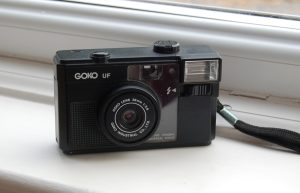
In 1982, with positive reputation in a variety of industries all over the world, GOKO released their first 35mm camera, the GOKO UF. Unlike other first cameras by other companies, GOKO’s priority with the UF was not to make a big splash at major photography shows, producing a model that would be highly desirable by professional and enthusiast photographers, rather they focused on the complete other end of the market.
Realizing that nearly all other Japanese camera makers were producing cameras for Japanese and other major Western markets, and that a huge number of emerging markets didn’t have affordable options, GOKO released the UF to be sold in developing countries like India and China. The letters “UF” stand for Universal Focus, which was a simple two zone focus, that when combined with a small aperture lens with great depth of field, could reliably produce sharp images up close and far away.
The GOKO UF and it’s successor, the UF2 sold very well, remaining in production for nearly a decade. By 1991, GOKO was producing cameras at a rate of almost 450,000 a month. The GOKO cameras were so successful, that in 1989, Sansei renamed itself as GOKO Camera Co. Ltd. to better align itself with the company’s most successful product.
By the 1990s, as one of the world’s highest producing camera makers by volume, GOKO expanded their camera lineup with new models like the UF-20 that expanded upon their simple zone focus system from their earlier camera, but now adding macro capabilities, which was something that traditional electronic auto focus cameras couldn’t do.
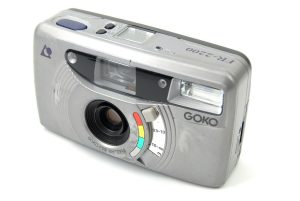
Up until this time, GOKO remained unknown in western countries like the United States as a bulk of their products were sold in emerging markets. In 1997, the company announced a new lineup of 35mm macro capable point and shoots that would be available to American photographers. The first two models, released in 1998 were the GOKO Macromax FR-350 and Macromax FR-2200. The two cameras were nearly the same with the most significant difference being the FR-350 used regular 35mm film and the FR-2200 used APS film.
Both cameras came in an attractive champagne/silver body, had fully programmed auto exposure, an in-body flash, a color coated wide angle lens (31mm on the FR-350 and 25mm on the FR-2200), and used a new version of GOKO’s familiar zone focus system, this time with three zones, rather than two.
To aide in composing images at close focus, included with the purchase of either model was an auxiliary close focus accessory that attached to the bottom of the camera and had an extendable wire frame which was used not only to frame, but also to measure distance at close range.
The new GOKO models got a big boost in popularity due to a 2-page review of both cameras in the April 1999 issue of Popular Photography where the magazine promoted the ease of use and affordability of the Macromax models. Never before was taking shots of things so close so easy and so inexpensive. The review acknowledged the shortcomings of the camera such as it’s limited support for film speeds and severe barrel distortion close up, but for the price, that didn’t seem to matter.

Popular Photography declared the camera to be ideal for collectors looking to document stamps, coins, or other small things, archivists who might need an inexpensive document scanner, or for kids who just want to take photos of bugs and flowers.
In it’s marketing for the camera, GOKO got a little creative, proclaiming the camera could shoot images with the equivalent of a 1/1000 shutter speed, which the camera couldn’t physically accomplish. Their basis for this claim was that in macro mode, with the flash on and it’s incredibly fast 1/10,000 burst speed, the camera could freeze motion like the equivalent of having a 1/1000 shutter. This might have been a stretch, but likely didn’t bother the target customer considering a sub $200 all plastic point and shoot.

In the United States, the Macromax FR-350 was distributed by the Agraph Corporation of Carlstadt, NJ and had a manufacturer’s suggested retail price of $159.95 and likely sold for around $130, which when adjusted for inflation, compares to about $225 today.
After the release of the original Macromax cameras, GOKO would expand the series to include more advanced features such as zoom lenses and electronic autofocus, and while still advertising them as macro cameras, couldn’t reach the minimum distance of 4 inches from the original model.
While the value and performance of the Macromax FR-350 seems undeniable as no one had a camera with these features at this price, how successful these models were is unclear. Until recently, I had never heard of the name GOKO before, and despite having an appealing feature set, the Macromax series is very rarely discussed by collectors.
A quick eBay search for “GOKO Macromax” only returns eight examples, most of which are found in Japan. My guess is, that despite the cool wow factor of easy macro, most people in the market for cheap plastic cameras likely had no use for pictures of bugs and stamps, plus with a brand unknown to US shoppers, and the looming onslaught of the digital camera revolution, the GOKO Macromax series was likely a tough sell.
Still, if you like to collect strange and unusual cameras, and want the challenge of a zone focus 35mm point and shoot that can get as close as 4 inches, this is not only a good option, but it’s also your only option. These cameras are cheap and basic, but therein lies their biggest strength, that they do a pretty good job of it with little risk.
My Thoughts
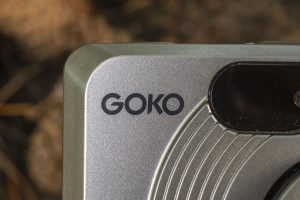
Count me in the category that had never heard of the brand GOKO before I read about one in a private camera bloggers chat that I am a member of.
It’s a good thing I heard about the camera’s macro capabilities before looking for one because at first glance, this looks like one of those cheap all plastic throwaway cameras that I wouldn’t spend a second thinking about.
In reality, the GOKO is only marginally better than those cheap all plastic throwaway cameras. It is simple, made entirely of plastic, and offers absolutely no manual control other than choosing from one of the three zone focus modes. But of course it’s those three zones that are the primary reason to get one of these cameras, so I gladly went looking for one.
Picking up the GOKO the first time does not do the camera any favors. The body is made from a hard plastic that feels slippery in your hands. It is painted in a sorta champagne colored gray pearlescent finish that probably was chosen to make the camera seem more luxurious, but just looks cheap. It creaks in your hands, and the camera is very light. At 186 grams, it’s one of the lightest cameras I’ve ever handled and to be honest, could have benefitted from a couple lead weights inside of the body to add some heft to it.
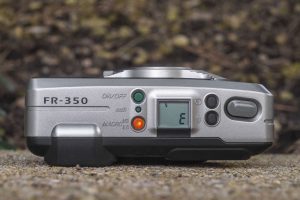
Up top, we see the camera’s model number, along with a green power button and a smaller green mid roll rewind button. Beneath the rewind button is a macro status light that glows yellow when the focus switch is in the yellow “S” position, and glows red when the focus switch is in the red “U” position. In both of these modes, the flash is automatically turned on. When the focus switch is in the green “N” position, the lamp is off.
Above the lens is the LCD status screen which shows exposures taken, battery, flash, and self timer status indicators. Next is the LCD are two buttons for flash and self-timer. The self-timer button can be turned on and off in any of the three focus zones. The flash button offers On, Off, and Slow Curtain modes in both “U” and “S” macro modes, but in “N” mode, also adds auto and red eye reduction modes. Finally, on the far right is the oval shaped shutter release button.

Flip the camera over and there is a sticker letting you know the camera was made in Malaysia, the camera’s serial number, and a 1/4″ tripod socket. Normally, on inexpensive plastic point and shoots, I question the need for a tripod socket, but in the case of a camera designed for macro, a tripod socket is useful both for stabilizing the camera, but also attaching the close focus bracket (which I did not have).

The camera’s right side has the film door release and a plastic loop for connecting a wrist strap. The GOKO Macromax is not a large camera in any dimension, but looking at it’s side profile, the front lens gives it a bit of a chunky look.
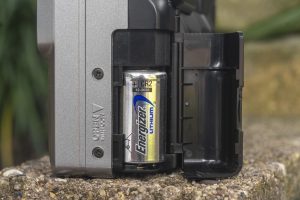
On the camera’s left side is the battery compartment which requires a single 3v CR2 Lithium battery. Although I did not have access to the Macromax’s manual, nor would this be something I would want to find out on my own, but the relatively simplicity of the camera’s electronics, suggests that a single battery would likely last for a very long time in this camera. In fact, the battery seen in the image to the right was taken out of a Minolta 35mm SLR that wouldn’t power on due to low power, but when put into the Macromax, it powered right up, without even tripping the low battery indicator.

The back of the camera has the eyepiece for the viewfinder in the upper left corner, and on the door, a film cassette peep window and the controls for the date back. Buttons for Mode, Select and Set control the functions of the back if you wish to use it.
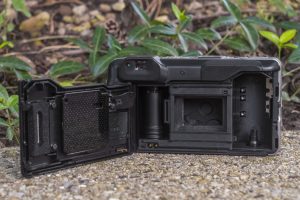
Opening the left hinged film compartment door reveals an all plastic and all black film compartment. No polished metal film rails or any chrome cassette forks, just a sea of black. Even the film pressure plate is black plastic. The door channels are deep enough so as to not require any sort of foam to keep light leaks out.
Film loads from right to left onto a fixed take up spool. The GOKO Macromax uses a simplified quick load system in which you need to extend the leader of a new roll of film to a small triangle near the hinge, close the door, and keep pressing the shutter release until the number 1 appears in the top LCD. The camera will not automatically advance the film for you.
The camera supports DX encoding, but can only tell the difference between 100 and 400 speed film. It lacks a sprocketed shaft, instead using a photo diode to count perforations, and there is a small CR2025 battery compartment on the inside of the film door for the date back.
Up front, the only thing to see is the three position switch for the zone focus modes. A green position marked “N” is for normal images shot 3.3 feet (1 meter) to infinity, a yellow position marked “S” is for macro images shot 1 to 3.3 feet (0.3 meters to 1 meter) away, and a red position marked “U” is for macro images shot 4 inches to 1 feet (0.1 meters to 0.3 meters) away.
Each position of the zone focus switch physically moves the lens forward and back as seen in the images above. This is a completely manual operation and can be done even with the camera off.
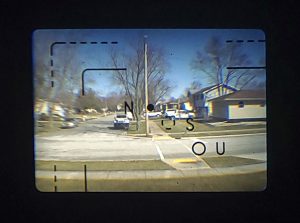
The viewfinder is pretty basic and a bit small for a 1990s point and shoot. The only things to see in there are painted frame lines and a central circle for both the “S” and “U” modes. When shooting the camera in “N” mode, use the entire viewfinder to frame your image, when shooting “S”, use the dotted lines as the top and left edges of your frame, and when shooting “U” use the solid lines.
Correctly framing macro shots using these frame lines is pretty difficult, and is something where having the close focus accessory would have been very helpful. As this is not an SLR where you can see through the lens to get an idea of what will be captured, my advice for shooting macro on this camera without the frame is to bracket your shots, or at least point it at a group of things like flowers at a slight angle so that you’re guaranteed to get something in focus.
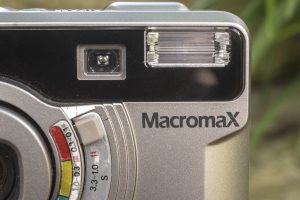
The flash on the Macromax is especially designed to work at close distances and moderates it’s power output depending on how close you are to the subject. Without this level of control, the flash would easily over power and wash out images up close.
It is clear the GOKO Macromax was purpose built to be used for closeups. As a normal, fixed focus camera, it is very simple and uneventful to use. As the name implies, simply point the camera at something and shoot it, and you’re almost guaranteed to get a decent, if unremarkable image.
Of course, the closeup performance is why you’re here. There were a million simple and easy to use point and shoot cameras from this era, so lets see how the Macromax performs.
My Results
With winter ending and spring on the horizon, I knew that this would be the best time of the year to use the GOKO Macromax for it’s ideal purpose, which was to take closeup picture of bugs and flowers. For that, I chose two fresh rolls of color film, the first was fresh Fuji 400, and the second, a roll of Kodak ColorPlus 200.
I had no clue of what to expect after developing the first roll of film through the Macromax. On one hand, I knew enough of GOKO’s history to know that they had been making these macro point and shoot cameras for a while, and that if properly executed, there’s no reason the images shouldn’t come out nice. The key words there being “properly executed”, but this was a camera that was designed to be easy to use and by those who wouldn’t otherwise be able to photograph things up close, so how hard could it be?
As it turns out, I wasn’t dumber than the camera, and the first roll of film produced a large number of really nice shots. Notice I said “large number” as I did screw up a few, but enough to be hopeful for a second roll.
With knowledge that the camera could hold it’s own in the hands of someone who knew very little about macro photography, I felt free to shoot the Macromax at a variety of small things around my house. One thing that may impact your decision of whether to buy one of your own is that this is definitely not a camera for someone who doesn’t like giving up control. Proper macro photography requires a pretty solid knowledge of lighting, measuring precise distance, and good framing, all of which the Macromax doesn’t provide. If you feel like the thought of giving up this much control of these facets of photography, the Macromax is definitely not for you.
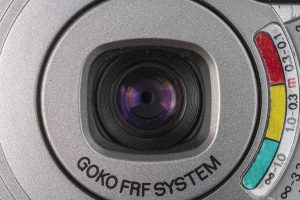
The 3-element GOKO lens is good enough for most anyone in the camera’s target market. Center sharpness is good with edges showing noticeable softness, but not anything that would be concerning compared to other point and shoot cameras. In fact, I would go as far as to say, ignoring the macro feature, this is a pretty nice point and shoot, capable of delivering images as nice as most others I’ve seen in this segment.
Vignetting is noticeable in all outdoor shots, especially those with the sky visible. The flash does a good job of illuminating objects close up, but has a tendency to blow out highlights and make backgrounds darken very quickly. The four shots in the first gallery of the bouquet of flowers was sitting on my kitchen table on a bright sunny day with sun pouring through the window, brightly lighting up the entire kitchen, but in the images here, the background is muddy and undefined.
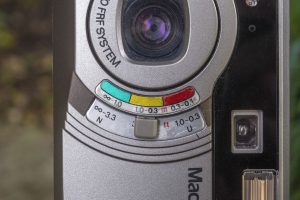
Close up shots also tend to warp perspective, exhibiting a strong fisheye effect, but once again, not anything that would cause concern for someone in the market for this camera. In fact, I would suspect that someone who doesn’t understand things like barrel or pincushion distortion, might even find the Macromax’s optically distorted images to be appealing.
Whatever the case, I think the 3-element lens does a good enough job here, and although GOKO could have improved things with a more advanced lens, it would have dramatically increased the price of the camera, likely putting it out of reach of what was probably a very narrow customer base to begin with.
The auto exposure system seems to err on the side of under exposure, as some of the close up shots show muddy darks and more grain that I would have expected, but perhaps this was intentional, so as not to blow out the highlights of things with the flash. The flash defaults to on in both macro modes, but can be disabled, however disabling the flash only makes the under exposure worse.

The rest of the camera was fine. The three zone focus system was simple enough to understand, and although I did not have access to the close focus frame, I found that it wasn’t 100% necessary for every shot. I could come up with complaints about the small viewfinder, the all plastic body, the lack of fully automatic film loading, but why bother? Once again, this is a purpose built camera that does exactly what GOKO designed it for, and little else.
In fact, I would say that the GOKO Macromax could very well be one of the best purpose built cameras ever made, in that it does exactly what it claims to do without apology. Whether you are a seasoned macro veteran or someone who has never shot anything closer than the minimum focus distance of most point and shoots, the GOKO Macromax is a fun little camera that’s worth picking up. They’re not especially common which tends to drive prices up a bit, so be careful so as not to pay too much. I doubt I’ll use this camera too often, but on the rare occasion I see some bugs or spring flowers blooming, having this camera on standby with a fresh roll of film isn’t the worst thing you could do.
Related Posts You Might Enjoy
External Links
http://camera-wiki.org/wiki/Goko_FR-350
http://fukucame.fan.coocan.jp/macromax.htm (in Japanese)
https://www.youtube.com/watch?v=tvPfyrw6_ng
https://www.flickr.com/photos/nefotografas/albums/72157680738401451/

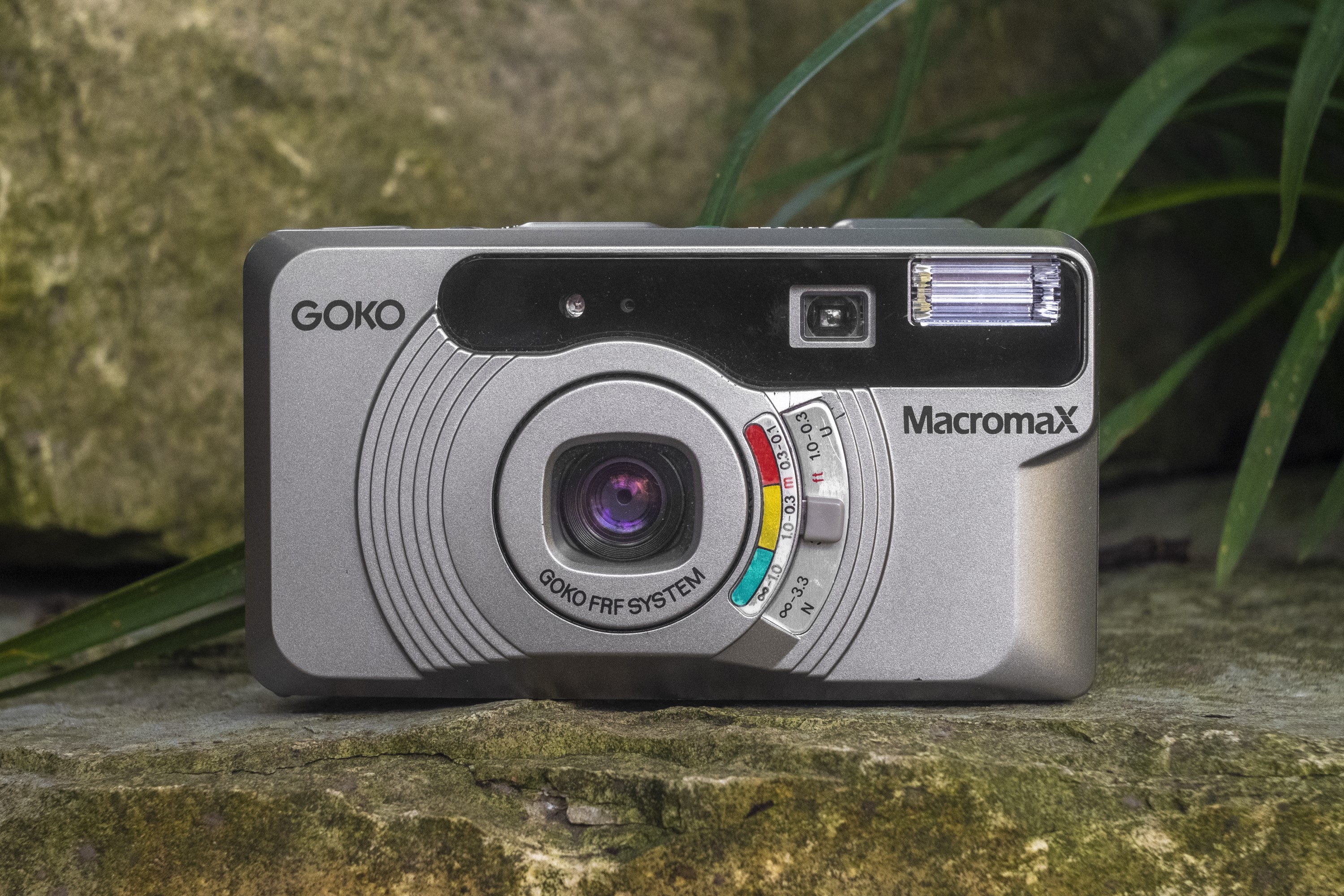
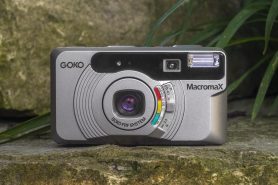
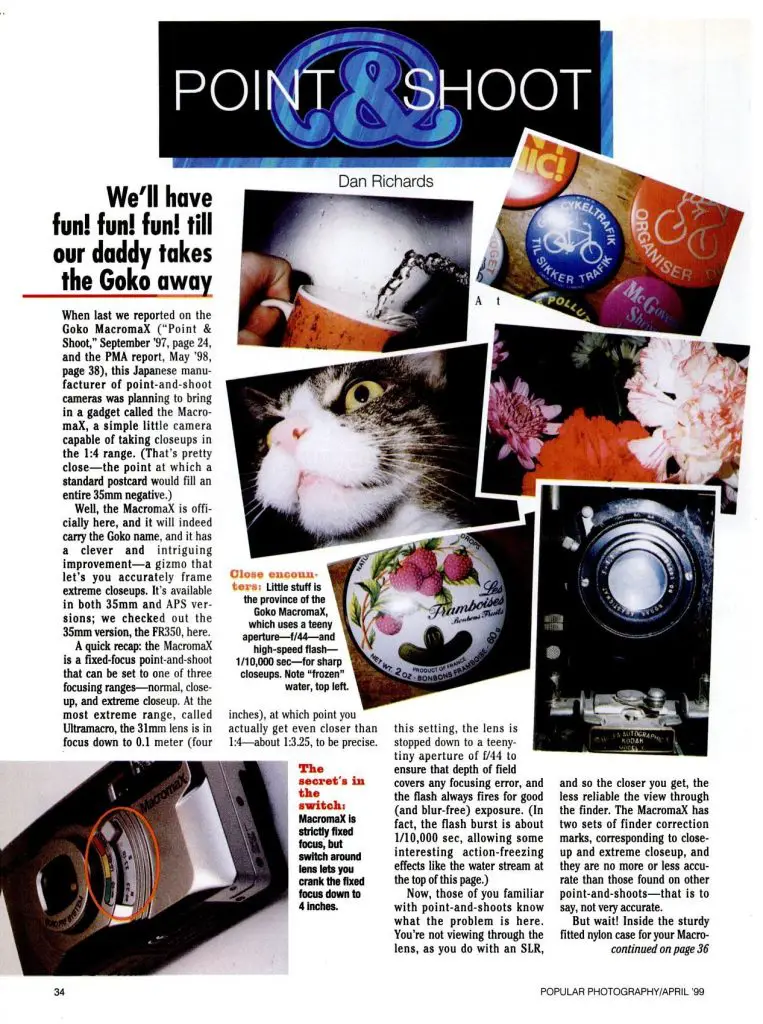
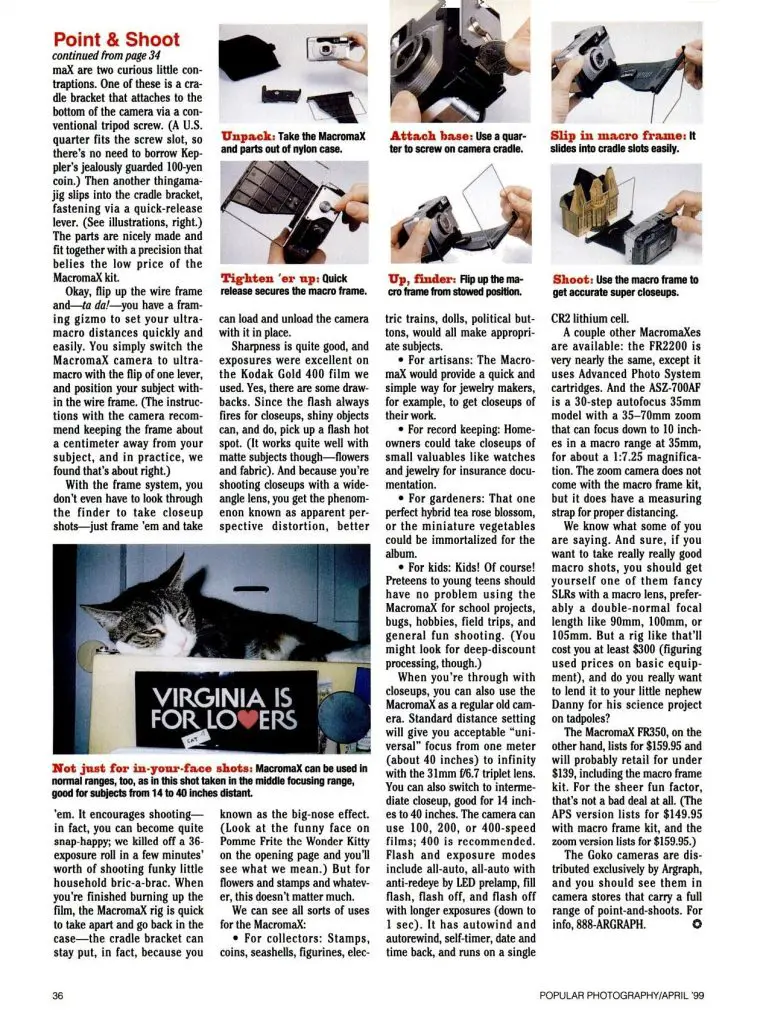

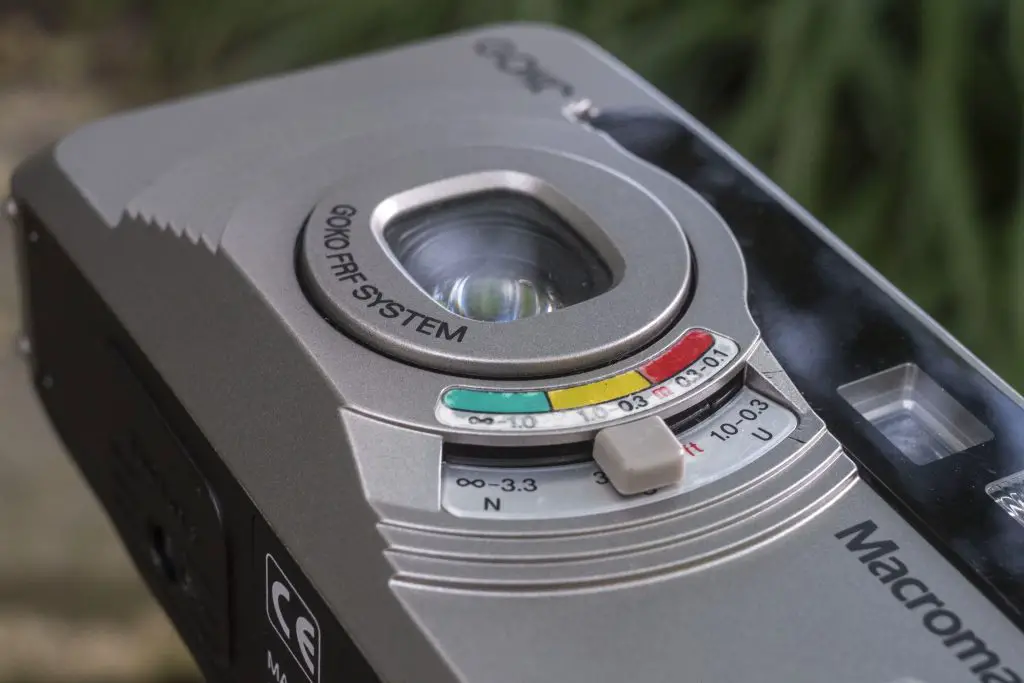
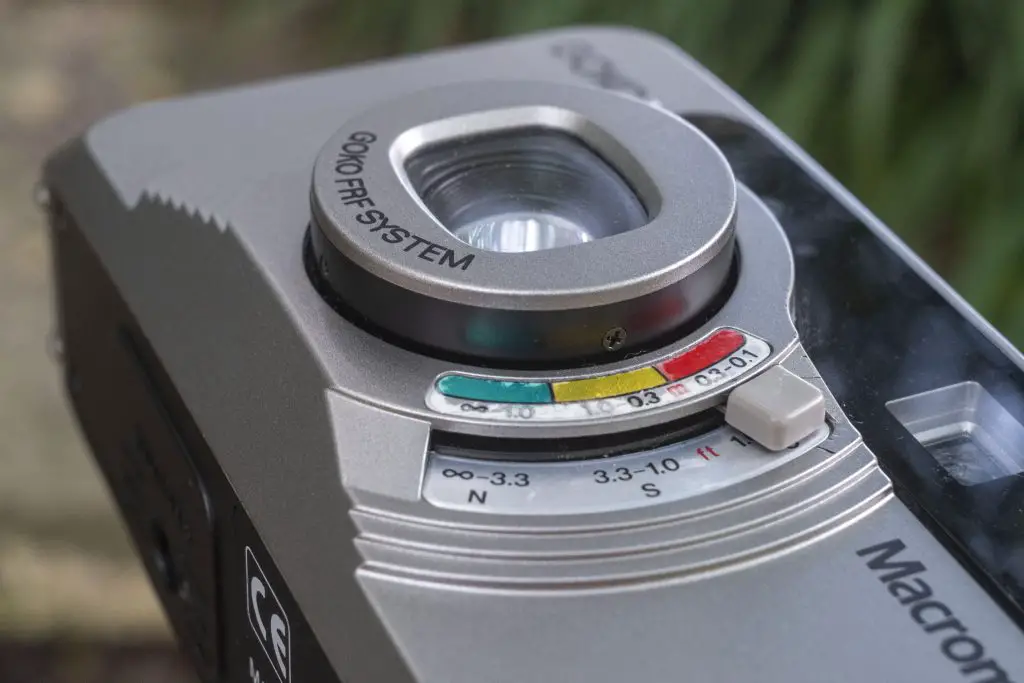





















Another intriguing niche camera, killed not just by digital but also smartphones. Thanks for a detailed review of a camera new to many of us!
I have tried a couple of Goko cameras. The first one I found in Japan. I only saw that one while searching for cameras so they are rare there too. It was a very capable camera, not the best but the close focus is its usp. I would happily buy another.